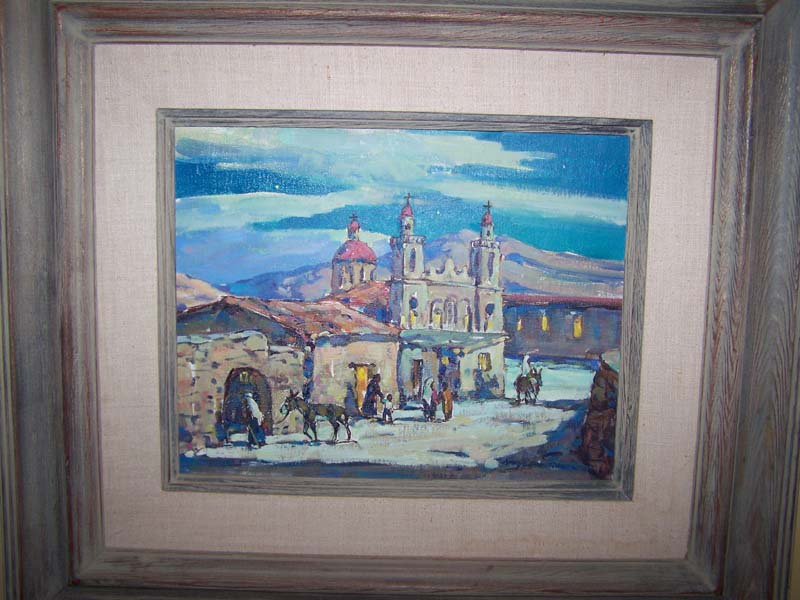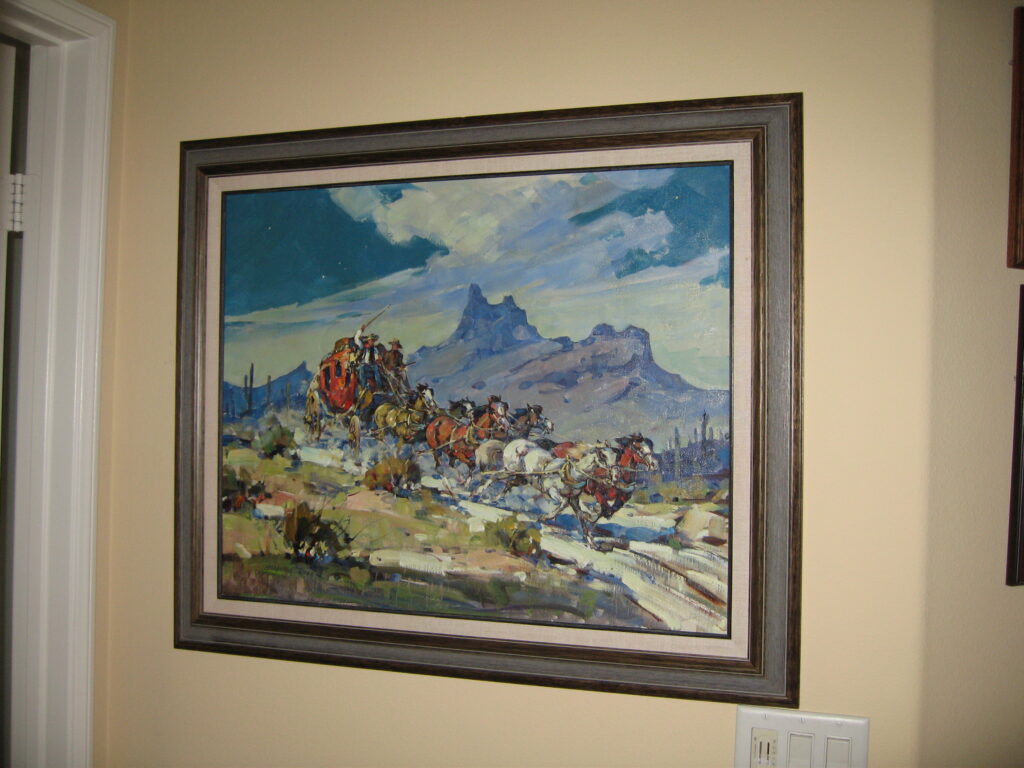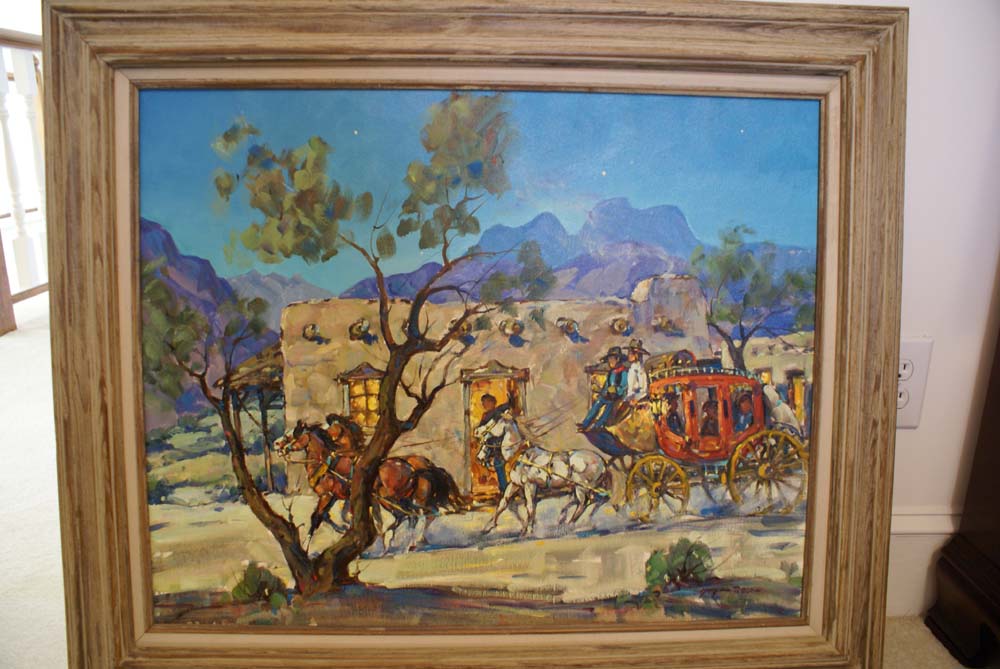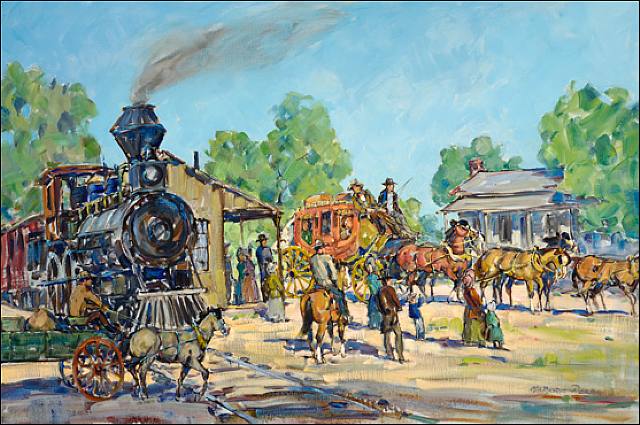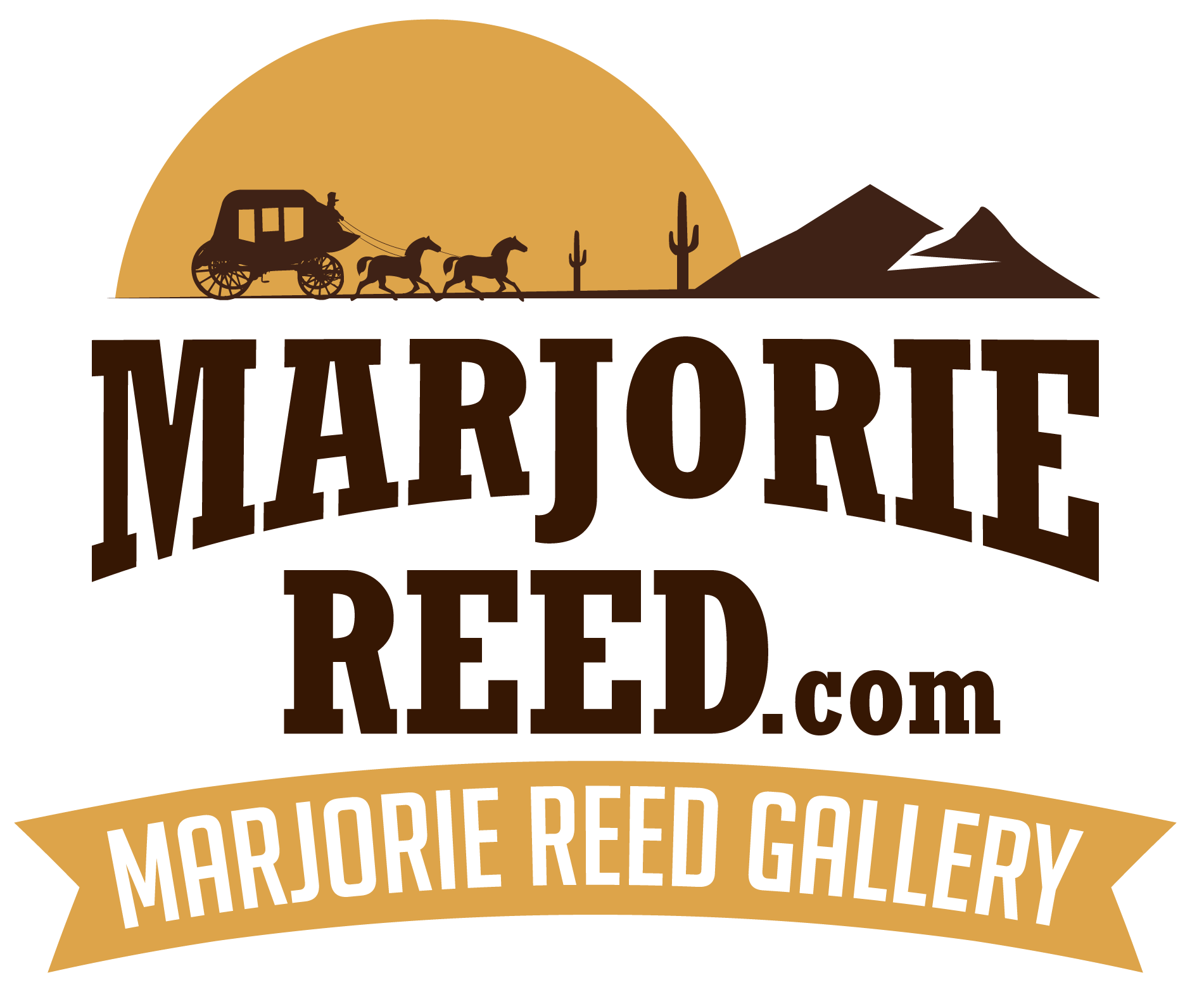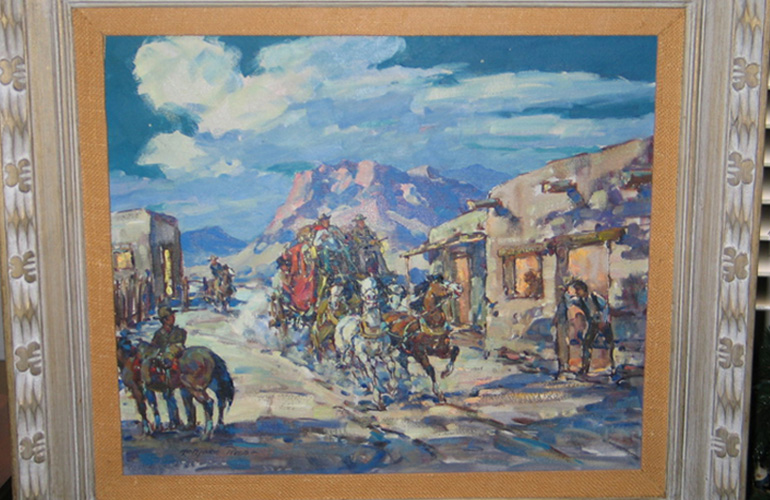
All about Marjorie
I was very blessed to have know Marjorie Reed for many years. I was one of those students whose lives were touched by her gracious hands. I still have my original artwork that I did with Marjorie reed when I was 5 years old. She spent almost every Sunday while I lived in Tombstone helping myself, my sister and so many others enjoy the world of painting. Her gift to the world was painting and she wanted to help out as many kids as possible. About 5 years prior to her death my father and brother had the pleasure of accompanying her on a stage ride starting in Tombstone to one of the Butterfield Stage trails. Marjorie Reed died in 1997, living in the desert near the Butterfield Stage Station in California.
When we buy paintings we pay upfront. We do not require you to send us the painting for evaluation, nor will we try to talk to you into giving us your painting for consignment. We want to thank all the people who have been working with us for years in order for us to share with everyone the artwork of Marjorie Reed/Harvey Day. Our gallery specializes in stage coach, western and cowboy paintings by this artist. We currentl have a collection of over 500 original oil paintings with our largest 10×15 foot.
Marjorie Reed
This yearning for a free lift in the ranching country could not be satisfied on the outskirts of Los Angeles, where Marjorie Reed grew up after the family moved west. Of a deeply religious nature, Marjorie feelsthat through her frustration in being denied a ranching life she was enabled to turn to her art, and to be rewarded by giving pleasure to those who enjoy her work. Only by returning the gift of the Creator can we alleviate this frustration, she says about her ability to paint. Most of the credit for her formal training she gives to Jack Wilkinson Smith of Alhambra, with while she studies for two years. Here extraordinary talent for western portrayals flowered in a series of twenty paintings showing stagecoaches on the old Butterfield Stage Route. These paintings attracted national attention and were acquired by James S. Copley.
If you have any original paintings by Marjorie Reed or Harvey Day we would love to talk to you about aquiring it for our personal collection. We buy all original art ranging in sizes from 6×8 to wall size. We specialize in rare and hard to find paintings that she painted very few or ones she painted for her catalog.
So great was the inner urge of Marjorie Reed to paint horses that when she was a girl she walked eighteen miles to site on a corral fence to watch and sketch them in action. She has since concluded that her paintings of horses resulted from frustration because of her great desire to live on a ranch, an ambition that did not materialize.
While Marjorie was yearning for a ranch life, she was busily occupied under the tutelage of her father in learning to draw and paint. Her father, Walter Reed of Springfield, Illinois (where Marjorie was born o February 22, 1915), was a commercial artist, and her mother possessed a fine artistic appreciation. The girl began drawing long before she went to school and then, in her father’s studio, designed Christmas cards for major companies and worked for a subsidiary owned by Walt Disney when she was only fourteen. Her work attracted the attention of Disney, who sought to place her in the animation department of his studios, but, as he says, “I couldn’t adjust to the regimentation.
This yearning for a free life in the ranching country could not be satisfied on the outskirts of Los Angeles, where Marjorie reed grew up after the family moved west.
Of a deeply religious nature, Marjorie feels that through her frustration in being denied a ranching life she was enabled to turn to her art, and to be rewarded by giving pleasure to those who enjoy her work. “Only be returning the gift of the Creator can we alleviate this frustration,” she says about her ability to paint. – Most of the credit for her formal training she gives to Jack Wilkinson Smith of Alhambra, with whom she studied for two years.
Her extraordinary talent for western portrayals flowered in a series of twenty paintings showing stagecoaches on the old Butterfield Stag Route. These paintings attracted national attention and where acquired by James S. Copley, publisher of the San Diego Union Tribune. Subsequently, they were used in a book, The Colorful Butterfield Overland Stage. This article is by Ed Ainsworth from The Cowboy In Art.
